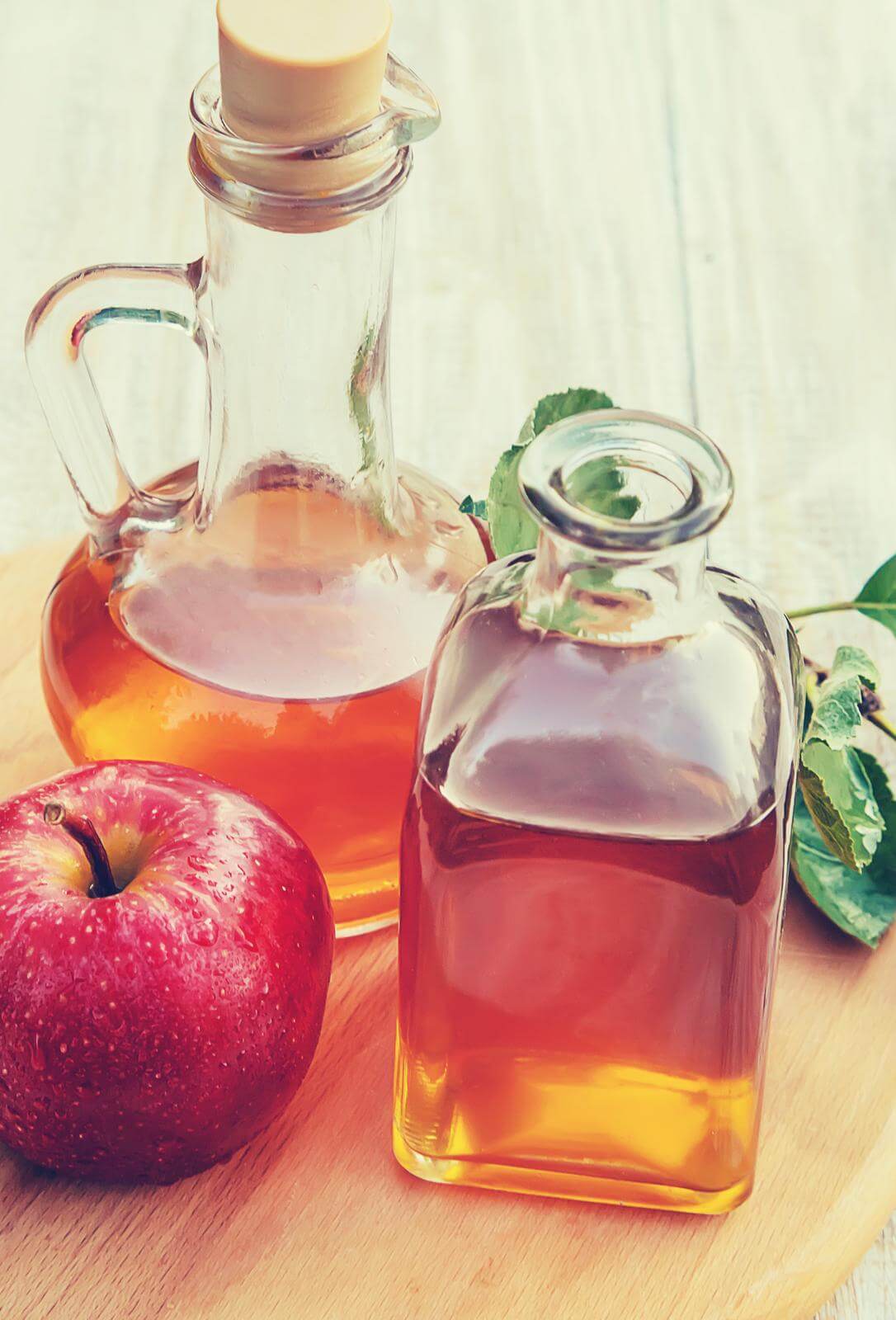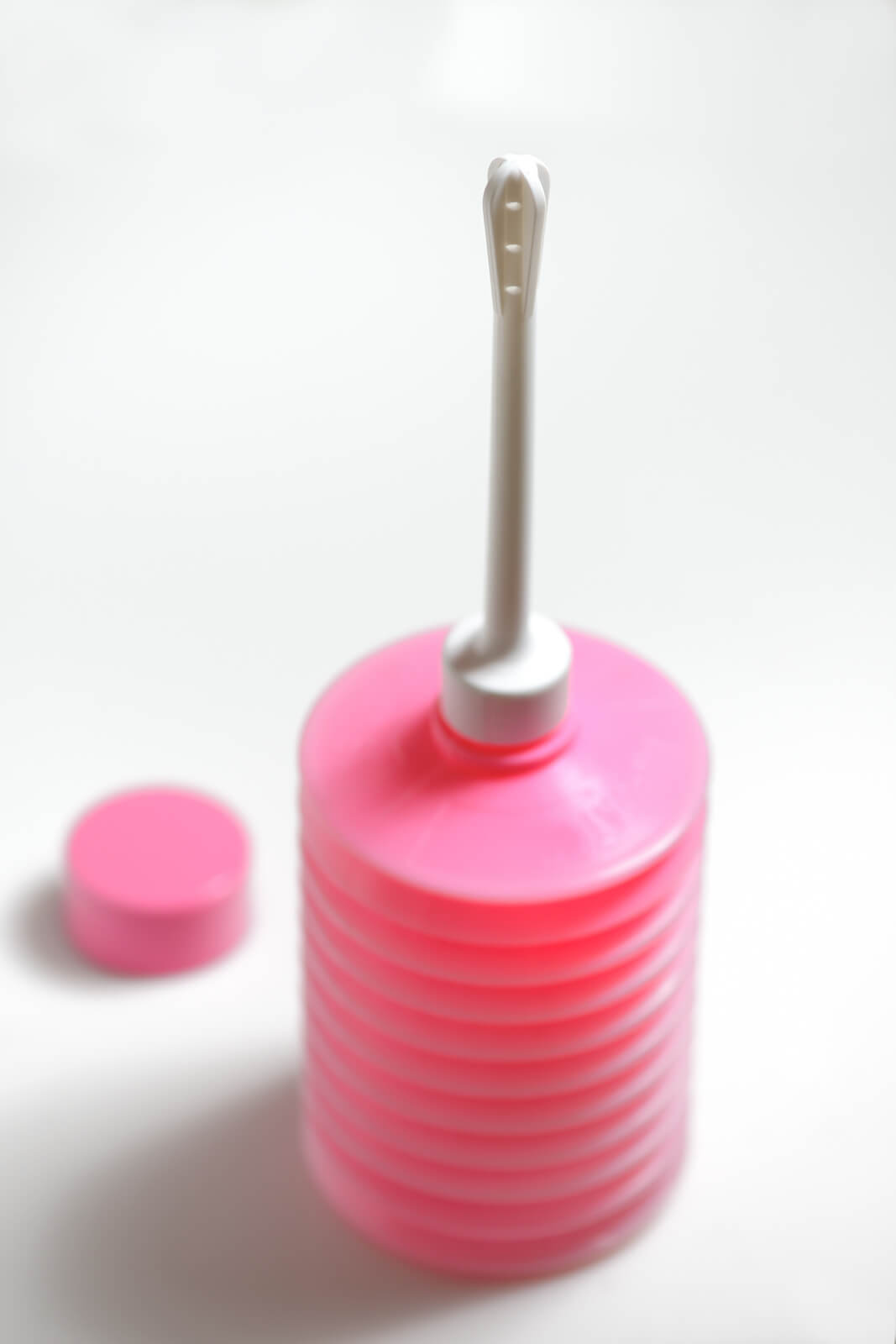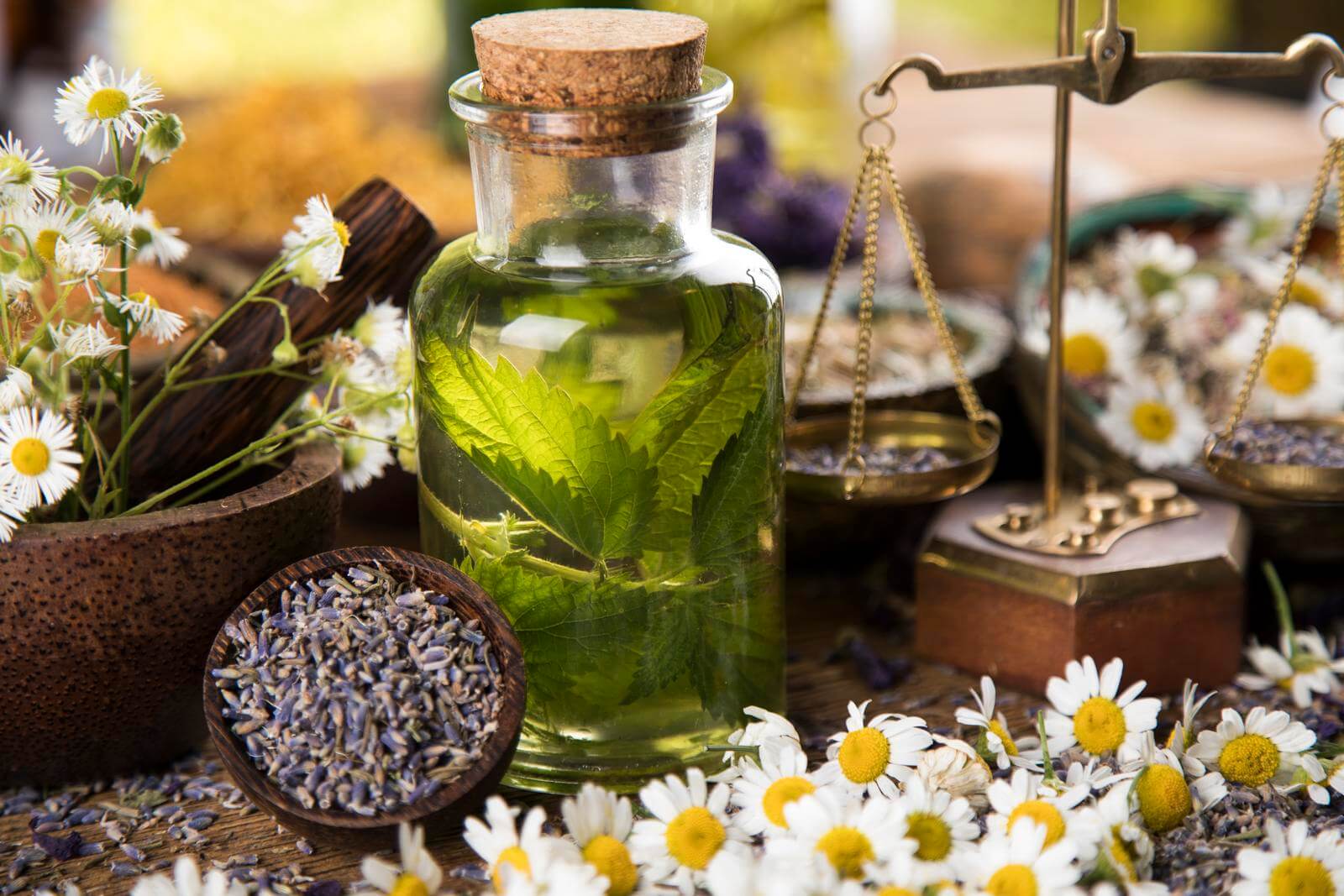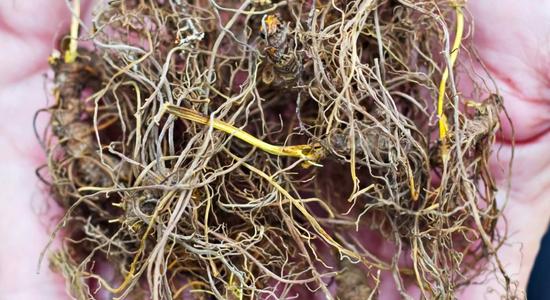
Yes, it is true, apple cider vinegar can cure a yeast infection. Although, it is not important to use apple cider vinegar to get the job done. There really isn’t much difference in vinegar when it comes to using it as a disinfectant; as, the primary reason vinegar works is acetic acid. Acetic acid is created by bacteria that eat up alcohol and produce this acid as a byproduct of their metabolism. So, all vinegars are simply alcoholic solutions that have had their alcohol transformed into acid; hence, why wine gets sour! So, when you're looking for the perfect apple cider vinegar to treat a yeast infection; you don’t really need to get a fancy, organic vinegar. The most important indicator of any vinegar’s efficacy as an antifungal, is its acetic acid content—directly reflecting its pH. Even plain old white vinegar will work nearly the same as a fancy, organic apple cider vinegar.
For vaginal yeast infections, apple cider vinegar makes a great option for a douche. Vinegar is an excellent choice for a douche as it can kill off yeast. Additionally, douches with vinegar will not inhibit probiotic Lactobacillus bacteria (Pavlova, Tao; 2000). Lactobacillus bacteria is vital for vaginal health; about 95% of the bacteria in a healthy woman’s vagina is comprised of Lactobacillus species (Anukam; 2006). Thus, wiping out the harmful yeast and leaving the helpful bacteria alone in the vagina, is key to effectively treating a vaginal yeast infection. And, as research seems to indicate, apple cider vinegar could help to un-attach the yeast from the skin or mucous membrane it has clung to. This will help mechanically remove the yeast from the body, and help to stymie further colonization of these body surfaces.
If you are planning on using vinegar to treat a yeast infection, you will need to dilute it. The acetic acid content of vinegar available at grocery stores is usually 5%. Although this seems small, 5% acetic acid can cause burns to the skin through repeated use. Never use undiluted vinegar on the body for any extended period of time—and especially not with a tampon.
Diluting the vinegar to a 10% concentration, a 1:10 ratio in water, may be the best way to use a 5% acidity vinegar topically. This will reduce the acetic acid present in the a 5% acetic acid vinegar down to 0.5% via dilution.
You may wish to test out weaker concentrations of apple cider vinegar as douches or topical washes before you start using stronger concentrations. As research indicates, a 0.5% concentration of vinegar (5% acidity vinegar diluted to comprise just 0.5% of the total fluid) may be enough to inhibit Candida. To be safe, always start out using weaker concentrations of ACV and then move up you solution strength if you don’t see any adverse effects on the skin.
Also, a key thing to do with your vinegar before you use it is to add in some antifungal essential oils, or steep it in antifungal herbs. This will add powerful anti-Candida phytochemicals to the vinegar and should greatly enhance this natural remedy’s efficacy. For more information on these natural items, feel free to check out these sections of Candida Hub:
A 1/2 Day & Yeast is Gone!
Linda Allen suffered from yeast infections for years. Through researching natural medicine & Candida, she found an efficacious solution!
Linda is one expert you want on your side! Let her show you how to get rid of a superficial yeast infection in just 12 hours; AND, keep it gone!
A 60-day, 100% money back guarantee is provided.
Visit Official Site!Research on Vinegar’s Antifungal Power

The first study we will look at, sought to see how well vinegar could be used to inhibit and kill Candida species; and, see how the surface of dentures would react to bathing in this mild acid (as Candida can grow on dentures and cause oral infections in those who wear these devices). The study was published in BMC Oral Health [15.1 (2015): 1]. The study used five different strains of Candida albicans and three different strains of Candida tropicalis. Candida albicans is known to be excellent at attaching to denture surfaces, and is most implicated in contaminating dentures; thus, this was the primary species used in the study. The researchers found that vinegar, at a concentration of 10 mg / mL, would totally kill all the strains of Candida after being exposed for 120 minutes.
The study also found higher concentrations, at 4 times the minimum inhibitory concentration (abbreviated MIC, this is the amount of a substance needed to arrest development, but does not kill—which 4 times the MIC was 10 mg / mL for Candida albicans), completely prevented Candida from adhering to the denture surface. This prevention of adhesion is important, as it shows vinegar may help stop Candida from attaching to the mucous membranes or the skin where it is causing infection. Consequently, vinegar may be capable of washing out yeast where it grows on the body by chemically removing it from the body area—helping to stop the infection via this mechanism as well. The researchers had this to say about using vinegar for cleaning dentures and stopping Candida:
Alcohol vinegar showed in vitro activity against Candida strains involved with denture stomatitis, with fungicide action after 120 minutes of exposure to a concentration of 10 mg/ml. It was also able to prevent the adhesion of C. albicans to acrylic resin and did not cause changes on the surface roughness and color of the acrylic resin after two hours of exposure.
http://dx.doi.org/10.1186%2Fs12903-015-0035-5
The next study, published in the journal Brazilian Oral Research [24.1 (2010): 28-33], used a 50% white vinegar solution to cleanse toothbrushes from Candida albicans. The study states that this solution of white vinegar was not quite effective at cleansing the toothbrushes from yeast; however, their own chart reporting these results, shows that this solution did significantly reduce the amount of Candida on the toothbrushes. The chart below shows that 50% white vinegar reduced Candida growth by about 4 fold in comparison to the control (which had no disinfecting solution and represented unhindered Candida development). Although this weaker solution of vinegar didn’t totally wipe out Candida, it did strongly inhibit the development of the yeast. Thus, a stronger concentration than 50% vinegar may be required to totally wipe out a yeast infection effectively.

Another study looked at how efficacious 50% and 100% white vinegar would be at sanitizing two different materials used in producing dentures; colonized by two different species of Candida albicans. The research was published in the journal BioMed Research International [2014 (2014)]. Several other methods of sterilization were used in the study besides the white vinegar. After inoculating the plates of these denture materials with yeast, the plates were allowed to sit in various sanitizing agents for 10 minutes. Then, the remaining yeast cells were allowed to be grown to see how much yeast remained after this sanitation process.
For both strains of Candida, and on both denture type materials, 100% white vinegar was found to be the best at sanitizing Candida albicans from these devices. The pure white vinegar totally wiped out all Candida albicans that had grown on the denture materials. Even 50% white vinegar was quite powerful at getting rid of the yeast. A chart from the study shows the results of the various sanitizing solutions when they were used for ridding the two different materials of the yeast.
Another study, using just a 10% vinegar solution on Candida species, was published in the Journal of Applied Oral Science [16.6 (2008): 385-390]. The participants in the study were denture wearers, and were instructed to leave their dentures in the vinegar solution overnight for 45 days. The study found that the 10% vinegar solution lowered the amount of Candida species present in the denture wearer’s saliva and reduced the amount of denture stomatitis (inflammation of the mouth). But, this weak concentration of vinegar was not that good at eliminating the Candida. However, using a little was shown to be better than not using the weak vinegar solution.
Another study showed a weak concentration of vinegar could rapidly stop Candida from adhering to acrylic resin plates. The study was published in the Jundishapur Journal of Microbiology [2012.2, Spring (2012): 388-392]. The study used 5% and 10% concentrations of vinegar and soaked plates that had Candida growing on it with a developed biofilm. The Candida colonized plates were soaked in the vinegar solutions for 8 hours and then analyzed. The study found that the 10% vinegar solution removed 100% of the Candida from the plates; and, the 5% vinegar solution removed 99% of the adhered Candida from the acrylic resin plates. The study concluded that overnight immersion in white vinegar would effectively remove Candida cells from denture surfaces. Thus, we can speculate that vinegar can also help to remove Candida that has adhered to skin and mucous membranes of the body; e.g., in the vagina or on the penis.
Acetic Acid, Fluconazole, & Candida glabrata

Another study, published in Frontiers in Microbiology [6 (2015): 919], looked at how acetic acid—when used in conjunction with fluconazole—would affect C. glabrata. The research stated C. glabrata infections are especially difficult to treat due to more inherent antifungal resistance; particularly against azole antifungal drugs (such as fluconazole, miconazole). C. glabrata also can colonize host biological tissues as a biofilm. The study reports that this is another issue due to the significant increase in resistance to antifungal drugs.
The study looked at how planktonic cells (single cells not covered in biofilm that swim or float in a liquid medium) treated with fluconazole would be affected by acetic acid. The study found the MFC (MFC is an abbreviation for minimum fungicidal concentration; i.e., the smallest concentration that will prove lethal) for fluconazole, without the presence of 0.5% acetic acid, was 312.5 µg / mL (micrograms per milliliter). With the addition of 0.5% acetic acid to the growing medium, the MFC for fluconazole was reduced by over half; showing an MFC of 150 µg / mL.
A Case Report of a Successful ACV Treatment
A relevant case report, documenting how ACV treated a chronic yeast infection, was published in Alternative Therapies in Health and Medicine [23.7 (2017)]. This case report discusses a 32 year old married woman who suffered from terrible symptoms for 5 years. This woman, according to the case report, suffered from infertility, groin pain, vaginal discharge with a foul odor, and itching. This woman did not use any contraceptive method and suffered from genital pain during sexual activity (dyspareunia).
This woman was tested and the laboratory results showed C. albicans was present. The woman was given a diagnosis of a chronic yeast infection due to recurrent infections.
A thorough history of the woman revealed she had been seen by 6 physicians and had used 7 antifungal treatment regimens in the past. The woman stated that she was not able to have regular sexual intercourse due to pain and bleeding; this put a strain on the relationship she had with her partner. The woman also reported she had to change underwear and pads often; the result was her social activities and quality of life were negatively affected.
The woman decided to see another medical doctor and was tested for cancer and immune deficiency. All of the tests showed she did not have either of these conditions. The medical doctor prescribed her fluconazole (the brand name can be Diflucan) and a vaginal douche that contained boric acid. Using this treatment, the woman garnered some relief for 20 days; yet, her symptoms ended up recurring.
Despite being told that she was unable to become pregnant; this woman did conceive a baby one year later. After she had delivered the baby, her medical doctor suggested using a vaginal douche of water and ACV. The douche was comprised of 20 mL of ACV (5% acetic acid) and 1 liter of water. The woman was instructed to use the ACV and water douche two times a day for a 4 month period. The woman would go on to not receive any other medical treatment during this time; and, her yeast infection totally disappeared. At 24 months after treatment, the woman was still free of yeast infections, and had no complaints.
This case report went on to discuss 3 studies that reported ACV has antifungal ability, has effects on resistance to antifungal drugs, and is a valid alternative therapy for C. albicans infections, C. glabrata infections, and Candida stomatitis (inflammation of the mouth and lips caused by Candida). The authors of this paper concluded by stating the report demonstrates a vaginal douche with ACV and water, applied twice a day, cured a vaginal yeast infection and no recurrence happened.
How Yeast React to Environmental pH

Candida also has the ability to raise the pH of the environment in colonizes; and thus induce its transition to its hyphal growth form (where Candida grows germ tubes to dig into the skin and more effectively entrench itself into an area of the body). Therefore, keeping the environment attacked by this yeast acidic, is important to stop dimorphic species of Candida (such as Candida albicans) from becoming more virulent.
A study showing how Candida could do this was published in the journal MBio [2.3 (2011): e00055-11]. The study found that Candida albicans effectively raises the pH of acidic environments from 4 to greater than 7 in less than 12 hours. The researchers speculated the yeast was able to do this by breaking down amino acids and synthesizing a type of ammonia. The yeast would then secrete this ammonia and alkalinize the environment; effectively triggering the hyphal growth phase of the yeast. Thus, it is important to keep the area Candida is invading acidic and unconducive to the development of its more virulent, hyphal form.
A study showed that Candida albicans, in a significantly acidic enough environment, starts to self destruct. The study was published in the Molecular Biology of the Cell [19.10 (2008): 4393-4403]. The study demonstrates that, in an acidic environment, Candida albicans’ Ras-cAMP pathway activates and signals the acceleration of programmed cell death. The research has shown that this accelerated death can be regulated by the MNL1 gene; and, that over time; this weak acid stress response can be adapted. But, regular exposure to apple cider vinegar should help to cause yeast cells to self destruct.
Eliminate Bacterial Vaginosis & Vaginal Odor
Jennifer O’Brien is one prominent expert on BV that knows how to get rid of vaginal odor. BV is a common infection that you don’t have to put up with.
Jennifer will show you how to naturally eliminate vaginal odor in just 3 days.
A 60-day, 100% money back guarantee is provided.
Visit Official Site!Making the Best Apple Cider Vinegar Remedy

As previously stated, adding in other antifungal plants to the equation, can greatly enhance any natural remedy that uses apple cider vinegar. You could choose to do this in a wide variety of ways. Adding in several drops of various essential oils to the vinegar would be one method. Steeping the apple cider vinegar in dried antifungal herbs is another way. Perhaps the best method would be to do both: steep the vinegar in herbs and then add various essential oils after the mixture has cooled. Keep in mind, you will need various concentrations of essential oils in the vinegar to achieve any results; so don’t assume adding a drop or two of an essential oil to a large amount of vinegar will do much. Again, for more information on how to effectively use various herbs and essential oils you can check out the sections on these topics (previously linked to above).
If you are treating a vaginal yeast infection, after you get done douching with the diluted apple cider vinegar, you should insert a probiotic pill into the vagina. Make sure the probiotic contains mostly Lactobacillus bacteria; as these are the bacteria that naturally dominate the vaginal microbiota. It would also help to take the same probiotic orally every day as well. Keeping helpful probiotic bacteria thriving in the body is a great way to stave off Candida overgrowth. These probiotic bacteria take up space, eat up excess sugar, and some can secrete lactic acid (which keeps the vagina in healthy, acidic state).
Clair Goodall: Author & Nature Lover
Clair Goodall is a bee-obsessed natural medicine convert from Minnesota. She is one expert you might want to know more about!
Clair will help you protect you and your family from toxic products and chemicals and help you discover solutions from nature.
Also, Clair’s book is backed by a 60-day, 100% money back guarantee
Visit Official Site!Linda Allen’s Natural, 12 Hour Yeast Infection Cure

As you may know, many people—especially women—suffer from recurrent yeast infections. They routinely buy product after product to treat the infections; however, the problem seems to always come back after a short while. Linda Allen was one such unfortunate woman who struggled with recurrent vaginal yeast infections. This seemingly small health problem would grow and transform into a systemic yeast infection in Linda’s body; totally ruining her health and making her feel terrible in her day to day life.
The beginning of Linda’s Candida story started around the same time she was treated for a sinus infection. When Linda first got her yeast infection she didn’t waste much time in making an appointment with a physician to get it resolved. After she used the prescription drug, it worked initially; however, as time went on, Linda came down with another yeast infection. Again, Linda went to her doctor and got a drug to treat it. Yet, like before, the yeast infection went away at first; but, after a little while of being free from the infection, it came right back again. The cycle of yeast infection treatment and recurrence would go on in Linda’s life for over a decade. Linda’s health continued to deteriorate and she felt miserable and did not know why.
Linda frequently made appointments with physicians and her health always seemed to be in disorder. Those who knew Linda wondered if she was somewhat of a hypochondriac or just much worse physically than she was letting on. Linda was without much direction in her knowledge of why she was going through this; until, she made an appointment with a naturopath. The naturopath did, fortunately, know what was happening to Linda. The naturopath explained to LInda that the reason she has frequent Candida outbreaks and general poor health was due to a systemic overgrowth of the yeast in her body. The naturopath did not have a permanent solution to her Candida problem, but Linda did get pointed in the right direction.
Linda began researching natural medicine diligently hoping to find an answer to her Candida problem. Linda read a plethora of books relating to her condition and natural therapies. When a doctor or natural medicine expert was kind enough to lend her their time, she would delve into their experience and glean what she could from their knowledge. Linda also spent a considerable amount of time and money trying a host of alternative therapies; none of them were able to permanently stop her Candida. Linda even tried a strict, Candida diet; but, found that after she discontinued the horrible eating protocol, her yeast infections would come right back. All these experience didn’t leave Linda empty handed, however. As she read and experimented, she gained helpful insights to how to stop Candida.
Eventually, she learned how to address the root causes of Candida overgrowth. Armed with this hard earned knowledge, Linda put together a novel treatment program. Linda spent a year polishing and refining her new approach. Finally, the time came to put her ideas into practice and she embarked on her new treatment plan. Thankfully, after a brief amount of time her yeast infections cleared up; and, as time continued to pass, the yeast infections stayed gone. Suddenly, LInda’s whole health began to improve and she felt like she finally had got her life back. Eventually Linda knew she had solved the Candida puzzle, she had found a permanent, total cure for Candida overgrowth.
Linda has since published a book detailing exactly how to repeat her success. Her treatment even includes a powerful 12 hour treatment for yeast infections—guaranteed to get rid of a yeast infection in just 12 hours. Linda’s treatment is also guaranteed to wipe out systemic yeast infections in a few weeks and restore your good health—no more fatigue, pains, spaciness, repeated bacterial infections, or any other symptom associated with Candida. Linda offers a 60 day, 100% money back guarantee on her book to assure anyone who may have been burned by a supposed “cure” in the past. If you are not better fast, you can quickly get all your money back. Since Linda initially published her book in 2004, over 100,000 people from all over the world have used Linda’s book to get rid of their Candida problems!
Linda’s book, Yeast Infection No More, is published by one of the world’s largest digital product retailers, a subsidiary of the U.S. based Keynetics Incorporated. Linda’s book is available as a digital ebook and, if you’d like to try it, you can start using it immediately. There is no need to return anything if you get your money back.
For more information about Linda’s personal struggle with Candida, information on other bonus books she includes with her book, or to see testimonies of others who have used LInda’s treatment plan, you can find out more at Linda Allen’s website.
Author: Mr. Nicholas Gross

Nick Gross is a natural medicine enthusiast who has been researching and writing about natural medicine since 2008. Nick is primarily a web developer but also researches and authors written and video content about natural health. Nick has a bachelor’s degree in Management Information Systems from the University of Northern Iowa.
Disclaimer
The information on this website is not a prescription for anyone. This information is for informational or educational purposes only, and is not a substitute for professional medical advice or consultations with healthcare professionals.
Affiliate Disclosure
Some of the links provided on this website are affiliate links. When a purchase is made through these links, Candida Hub earns money from commission. This helps to keep the website up and helpful to people for free. Thank you for any support!
Stay Up to Date
If you enjoyed this article, consider following / liking our Facebook page. This page is primarily utilized to alert followers of new articles that are put on Candida Hub. Candida related news is also discussed. While you are there, you can see what has been more recently added to Candida Hub.
The Secrets, Benefits & Uses of Apple Cider Vinegar
The e-book "Apple Cider Vinegar Benefits and Uses" teaches you what apple cider vinegar is, why YOU need it, and how to use this amazing natural product. Cooking, Skin Care, Acne, Weight Loss, Energy, Endurance... The list is long!
A 60-day, 100% money back guarantee is provided.
Visit Official Site!SOURCES:
- http://dx.doi.org/10.1155/S1064744900000090 — Pavlova, S. I., and L. Tao. "In vitro inhibition of commercial douche products against vaginal microflora." Infectious diseases in obstetrics and gynecology 8.2 (2000): 99-104. PubMed Full Text
- http://dx.doi.org/10.1097/01.olq.0000175367.15559.c4 — Anukam, Kingsley C., et al. "Lactobacillus vaginal microbiota of women attending a reproductive health care service in Benin city, Nigeria." Sexually transmitted diseases 33.1 (2006): 59-62. PDF Available Here, PubMed
- http://dx.doi.org/10.1016/j.micinf.2006.01.003 — Anukam, Kingsley, et al. "Augmentation of antimicrobial metronidazole therapy of bacterial vaginosis with oral probiotic Lactobacillus rhamnosus GR-1 and Lactobacillus reuteri RC-14: randomized, double-blind, placebo controlled trial." Microbes and Infection 8.6 (2006): 1450-1454. PDF Available Here, PubMed
- http://dx.doi.org/10.1186%2Fs12903-015-0035-5 — de Castro, Ricardo Dias, et al. "Use of alcohol vinegar in the inhibition of Candida spp. and its effect on the physical properties of acrylic resins." BMC oral health 15.1 (2015): 1. PubMed Full Text
- http://dx.doi.org/10.1590/S1806-83242010000100005 — Komiyama, Edson Yukio, et al. "Evaluation of alternative methods for the disinfection of toothbrushes." Brazilian oral research 24.1 (2010): 28-33. PubMed
- http://dx.doi.org/10.1155/2014/519098 — Yildirim-Bicer, A. Z., et al. "In vitro antifungal evaluation of seven different disinfectants on acrylic resins." BioMed research international 2014 (2014). PubMed Full Text
- http://dx.doi.org/10.1590%2FS1678-77572008000600006 — Pinto, Telma Maria Silva, et al. "Vinegar as an antimicrobial agent for control of Candida spp. in complete denture wearers." Journal of Applied Oral Science 16.6 (2008): 385-390. PubMed Full Text
- https://doi.org/10.3389/fmicb.2015.00919 — Mota, Sandra, et al. "Candida glabrata susceptibility to antifungals and phagocytosis is modulated by acetate." Frontiers in Microbiology [6 (2015): 919].
- https://pubmed.ncbi.nlm.nih.gov/29112940/ — Ozen, B., and M. Baser. "Vaginal Candidiasis Infection Treated Using Apple Cider Vinegar: A Case Report." Alternative Therapies in Health and Medicine [23.7 (2017)].
- http://dx.doi.org/10.5812/jjm.2499 — AbbasAli, Jafari, Falah-Tafti Abbas, and Kazemi Abdolhassan. "Vinegar as a removing agent of Candida albicans from acrylic resin plates." Jundishapur Journal of Microbiology 2012.2, Spring (2012): 388-392.
- http://dx.doi.org/10.1128/mBio.00055-11 — Vylkova, Slavena, et al. "The fungal pathogen Candida albicans autoinduces hyphal morphogenesis by raising extracellular pH." MBio 2.3 (2011): e00055-11. PubMed Full Text
- http://dx.doi.org/10.1091%2Fmbc.E07-09-0946 — Ramsdale, Mark, et al. "MNL1 regulates weak acid–induced stress responses of the fungal pathogen Candida albicans." Molecular biology of the cell 19.10 (2008): 4393-4403. PubMed Full Text
- http://www.candidagenome.org/ — Candida Genome Database (MNL1 gene function)








